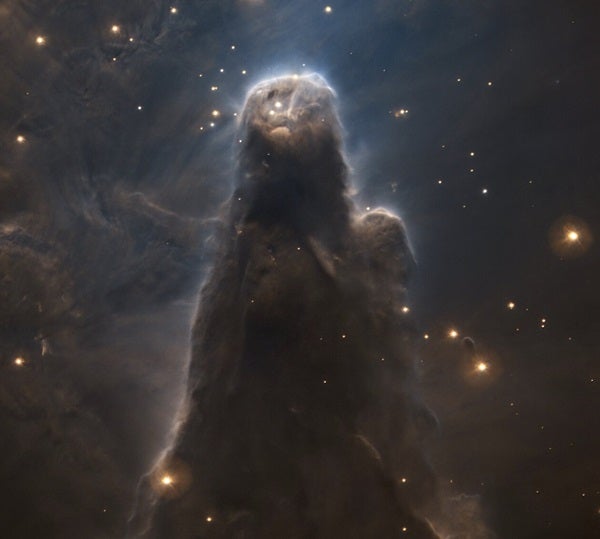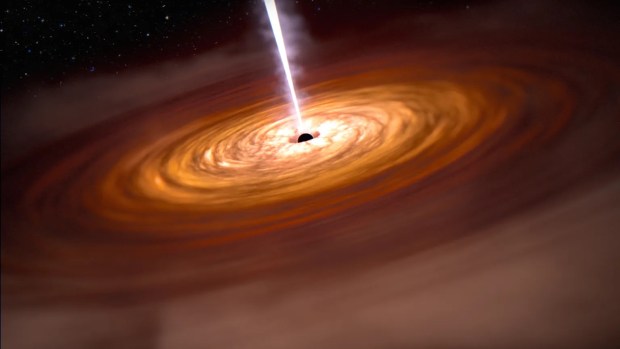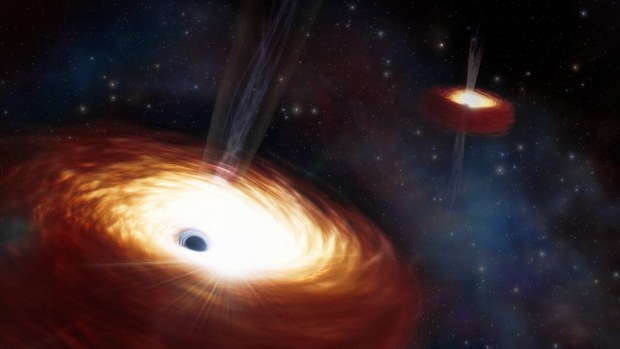Reminiscent of the scaly and monstrous form of Godzilla, this image of the starry region surrounding the Cone Nebula was taken as part of the European Southern Observatory’s (ESO) celebration of six decades of operation.
In the constellation Monoceros the Unicorn, 2,500 light-years from Earth, a dark cloud erupts from a sea of stars in the region of NGC 2264, not unlike a famed lizard emerging from the ocean to wreak havoc on Tokyo. The namesake shape of the Cone Nebula is due to giant clouds of cold molecular gas and dust, which tend to form new stars.
Newborn blue stars within these clouds emit powerful stellar winds and radiation, which carve out local voids. Gas compresses near the edges of these voids, forming mighty pillars like the Cone. In this shot, hydrogen gas is represented in blue and sulphur gas is shown in red. (Filters are responsible for making bright blue stars appear golden in this shot.)
According to an ESO release, besides being a very active region of space, The Cone Nebula is huge, towering more than 7 light-years tall. This is almost twice the distance from our planet to Proxima Centauri, the closest star to Earth other than the Sun.
The image was captured by the FOcal Reducer and low dispersion Spectrograph 2 (FORS2) on the Very Large Telescope (VLT) in Chile’s Atacama Desert. ESO observatories like VLT have captured countless captivating shots of a wide range of celestial objects over the past 60 years. The scopes have given astronomers a better understanding of the Milky Way’s black hole, as well as captured the first image of an exoplanet.
On the horizon, ESO expects to build and utilize a gigantic visible- and infrared-light telescope named the Extremely Large Telescope (ELT). This massive scope will host a 128-foot-wide (39 meter) primary mirror. Unparalleled in size, the ESO says: “The leap forwards with the ELT can lead to a paradigm shift in our perception of the universe, much as Galileo’s telescope did 400 years ago.”
Construction on the ELT began in 2017, and the telescope is expected to see first light in 2027.










